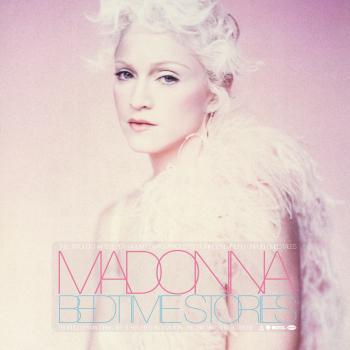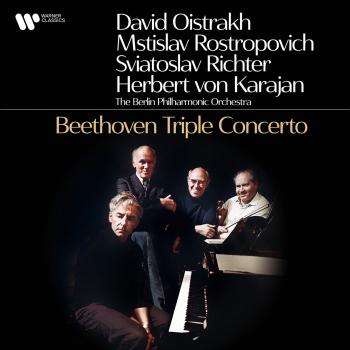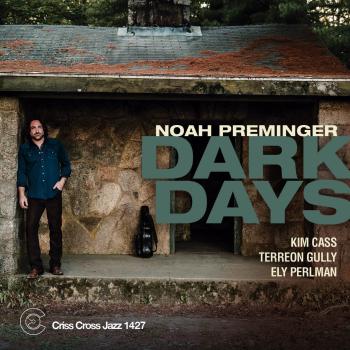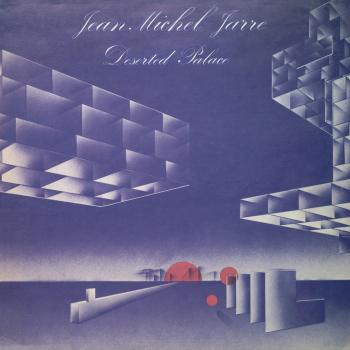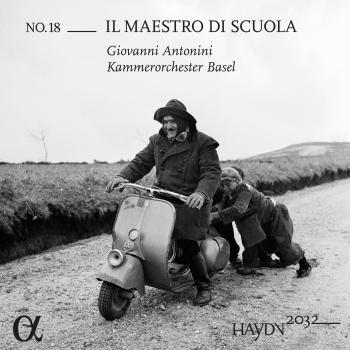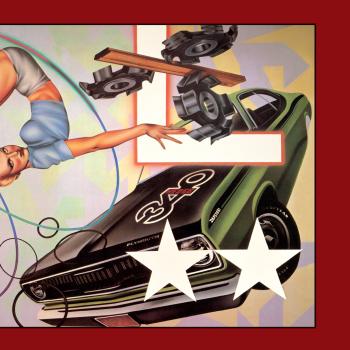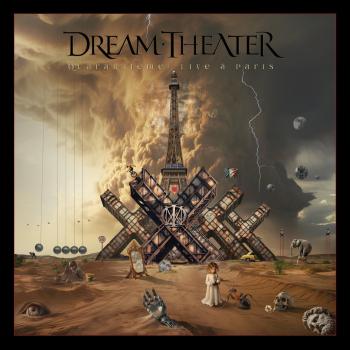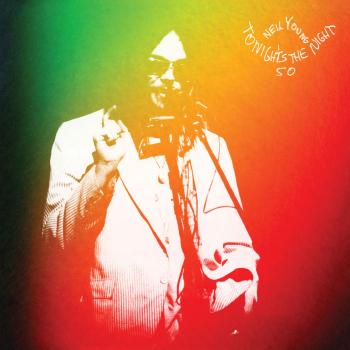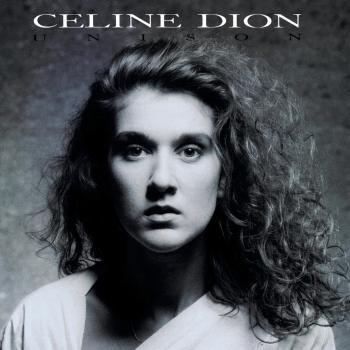
Together Again George Mraz & Emil Viklicky
Album info
Album-Release:
2014
HRA-Release:
25.02.2014
Album including Album cover Booklet (PDF)
- 1 Dear Lover 02:46
- 2 Poem 06:32
- 3 Theme from 5th Part of Sinfonietta 05:33
- 4 A Bird Flew By 05:20
- 5 U Dunaja, U Prespurka 05:33
- 6 Austerlitz 03:47
- 7 Moon, Sleeping in a Cradle 04:07
- 8 Thank You, Laca 03:58
- 9 Up On a Fir Tree 03:20
- 10 I Saw Grey Pidgeon 05:05
- 11 In Holomóc Town 05:42
Info for Together Again
Der britische „Guardian“ schrieb vor einiger Zeit, ACT befände sich auf der Mission, die besten europäischen Pianisten auf seinem Label zu versammeln. Dass die nicht unbedingt aus Skandinavien kommen müssen, haben kreative Virtuosen wie Yaron Herman, Leszek Mozdzer oder Gwilym Simcock bewiesen. Und dass sie nicht jung sein müssen, beweist nun das ACT Debüt „Together Again“ von Emil Viklicky. Der 65-jährige Tscheche ist vielleicht zu bodenständig geblieben, um bei uns früher als das entdeckt zu werden, was er ist: Der „Patriarch des tschechischen Jazzpianos“, wie der Londoner Evening Standard meint. Und „einer der besten zeitgenössischen Pianisten, dessen Anschlag, Voicings und Akkordspiel sehr viel gemeinsam haben mit den großen Meistern des Geschmacks Tommy Flanagan und Jimmy Rowles“, wie die amerikanische „Jazz Time“ schon 2004 erkannte.
In einer musikalischen Familie in Olmütz aufgewachsen, nahm Viklicky zwar ein Mathematikstudium auf, das er auch mit Bravour abschloss, doch parallel dazu hatte er den Jazz entdeckt und so viel geübt, dass er schon 1974 beim tschechischen Amateur Jazz Festival zum besten Solisten gewählt wurde. Gleich danach nahm ihn Karel Velebny in sein SHQ Ensemble auf, die wohl renommierteste Jazzband der Tschechoslowakei. Viklicky gewann weitere Preise und schließlich ein Stipendium für ein Kompositionsstudium am Berklee College of Musik in Boston. Fast fünf Jahre durchlief er so das amerikanische System: „Ich habe da alles gelernt, was dazu gehört: Grundlagen der Komposition und des Arrangierens, aber auch, was sonst dazugehört zum Musikerberuf“, erinnert er sich.
Zurück in Prag kam ihm das zugute: Viklicky wurde nicht nur der beste Jazzpianist des Landes, sondern auch einer der höchstdekorierten Filmmusiker, einer der prägendsten Lehrer, einer der wichtigsten neoklassischen Komponisten und zeitweise nach der Wende auch Präsident der tschechischen Jazz Gesellschaft. In dieser Zeit traf er auch einen ehemaligen Landsmann wieder, der sozusagen vom gleichen Starthäuschen aus den anderen Weg genommen hatte: den vier Jahre älteren Bassisten George Mraz. Auch Mraz verdiente sich wie Viklicky die ersten Sporen bei Karel Velebny, auch er hat (früher als Viklicky) in Berklee studiert, danach sogar ein Jahr in München gelebt. Doch anders als Viklicky kehrte Mraz nach der Niederschlagung des Prager Frühlings nicht in die Tschechoslowakei zurück, sondern ging in die USA, um dort eine große Karriere zu machen. Auf bald 1000 Platten und CDs findet sich sein Name, kaum ein Großer des Jazz, mit dem er nicht gespielt hätte. Das Thad Jones/Mel Lewis Orchestra, Stan Getz, Tommy Flanagan und Richie Beirach (mit dem er auch drei Alben für ACT einspielte) waren die wichtigsten festen Stationen.
„George spielt den Bass, als ob er ihn erfunden hätte. Er spielt immer genau die richtige Note, die du hören willst“ hat Beirach einmal über ihn gesagt. Ebenso wichtig ist, dass Mraz als Kind zunächst Geige und Altsaxofon lernte: Wohl deshalb ist er der vielleicht beste Bogenspieler im Jazzbereich, besitzt er eine starke lyrische, gleichwohl zur Attacke fähige Ader und ein unverwechselbares Vibrato.
Es ist kein Wunder, dass Mraz nach zehn Jahren bei Tommy Flanagan ein paar Jahre später bei Viklicky landete. Kennengelernt hatten sich die beiden bereits 1976 auf einem Festival in Jugoslawien, 1997 fanden die beiden dann sozusagen zwangsläufig zueinander, hatten sie doch beide dieselbe Idee: die mährische Volksmusik, mit der sie als Kinder groß geworden waren, in den Jazz zu überführen. Es mag hierzulande viele überraschen, aber parallel zum von Skandinavien aus die Welt erobernden volksmusikalischen Turn des Jazz geschah dies mit „Moravia“ 2002 und „Moravian Gems“ 2007 auch in Tschechien – wenn auch bei Milestone in den USA veröffentlicht und nicht besonders publikumswirksam.
Für die Versenkung aber ist diese fesselnde, ideenreiche und von zwei absoluten Ausnahmemusikern gespielte Musik zu gut, befand Siggi Loch. Völlig zurecht, wie ein Stück wie „Austerlitz“ beweist: Vor allem die harmonischen Alterierungen suchen ihresgleichen, „was am modalen Charakter der südmährischen Volksmusik liegt“, wie Viklicky erklärt. Und so klingen Balladen wie „Dear Lover“, „Javorina“ oder „Moon, Sleeping In The Cradle“ wie durch filigrane Chromatik, Vorschläge und Triller ins Slawische gedrehte Randy-Newman- oder Ray-Charles-Nummern. Der Einfluss beiderlei Klassik, der europäischen wie der amerikanischen, ist perfekt zum Beispiel bei „In Holomóc Town“ herauszuhören: Nach dem expressionistischen, gestrichenen Bass-Einstieg folgt eine kleine Lehrstunde in swingendem Postbop.
Und in Leoš Janáčeks „Theme From 5th Part Of Sinfonietta“ zeigt sich die andere Besonderheit dieser Aufnahme. Ursprünglich hatte Viklicky seine alten und neuen Kompositionen wie bei früheren Aufnahmen für Trio arrangiert. Als er aber in München alleine mit George Mraz probte, entdeckten beide, dass es ohne Schlagzeuger ebenfalls gut klingt. Mehr als das, wer „Together Again“ nun im Duo hört, kann sich gar nicht mehr vorstellen, wie Viklickys einzigartiges Spiel mit Legato und Stakkato besser zur Geltung kommen könnte.
Ein neuer, tschechischer Weg des Jazz, frische Ideen auf dem Boden der Traditionen und nicht zuletzt zwei der bemerkenswertesten Stimmen des Jazz sind auf „Together Again“ zu entdecken. Spät, aber nicht zu spät.
George Mraz, Kontrabass
Emil Viklický, Klavier
Recorded at Realistic Sound Studio by Florian Oestreicher, January 16 & 17, 2013
Mixed and mastered by Klaus Scheuermann
Produced by Siggi Loch
George Mraz
A native of the Czech Republic, George Mraz was born in 1944. He began his musical studies on violin at age seven and started playing jazz in high school on alto saxophone. He attended the Prague Conservatory in 1961 studying bass violin and graduating in 1966.
It is likely that his early exposure to these melodic instruments contributed to his mature lyric gifts as a bassist, an instrument he came to rather late in the game. "I was playing some weekend big band jobs," Mraz recalls, "and this bass player wasn't very good. Either that or he was a genius," he laughs, because he seemed to always play the wrong notes. Every now and then you'd think he must play some of the right notes, just by accident. But, no. So I picked up the bass on a break and tried to find the notes. I thought, 'It's not that difficult.' So I got a bass and began playing a little bit. Next thing I knew, I was in the Prague Conservatory."
While studying at the Prague Conservatory Mraz was deeply moved by the Voice Of America radio broadcasts of Willis Conover, who was his connection to a vast new world of possibilities across the ocean. "The first jazz I ever heard was actually Louis Armstrong when I was about twelve years old. They had an hour of his music on one Sunday in between all these light operettas and stuff they played on the radio in the Czech republic (then Czechoslovakia). Then the strange voice of Satchmo singing was quite a shock. 'How can he get away with a voice like that?' I thought. But by the time the hour was over I decided I liked it better than anything I heard that day, so I started looking into jazz”.
"The Voice Of America came on midnight for an hour or so, and my listening equipment wasn't so great, and it was hard to make out the bass. So I was listening to all the instruments, and how it all worked together, rather than just focusing on the bass. I've really been influenced by everything I've heard, but of course I paid special attention to Ray Brown, Scott LaFaro, Paul Chambers, and Ron Carter." Mraz just naturally gravitated towards the music, and became a seasoned veteran of the clubs where he could perform the music that consumed his imagination almost every night. "By some miracle I finished with school, and I began working in Munich with people like Benny Bailey and Mal Waldron. Meanwhile, I'd received a scholarship to Berklee, and when the Soviet tanks entered Prague, it seemed like the ideal time to use it."
During that time he was performing with the top jazz groups in Prague. After finishing his studies George went to Munich and played clubs and concerts throughout Germany and Middle Europe with Benny Bailey, Carmel Jones, Leo Wright, Mal Waldron, Hampton Hawes, Jan Hammer and others.
In 1968 George Mraz came to Boston on a scholarship to the Berklee School of Music and played at Lennie's on the Turnpike and the Jazz Workshop with such artists as Clark Terry, Herbie Hancock, Joe Williams and Carmen McRae.
In the winter of 1969 George got a call from Dizzy Gillespie to join his group in New York. After a few weeks with Dizzy, George went on the road with Oscar Peterson for about two years. After that he worked with the Thad Jones/Mel Lewis Orchestra for the next six years. In the late seventies George worked with Stan Getz, New York Jazz Quartet, Zoot Sims, Bill Evans, John Abercrombie and for over ten years with Tommy Flanagan.
George Mraz has a profound gift for the acoustic bass. And while this musician's musician has been a stalwart presence on the modern jazz scene practically from the moment he first landed on these shores from his native Czechoslovakia, in the eyes of the general public his work is still somewhat undervalued. Perhaps because the self-effacing qualities he brings to the bandstand mirror the quiet character of the man stage left-onstage or off, he eschews the spotlight.
With his customary selflessness, Mraz allows as how he never demurred from approaching projects as a leader. "I always wanted to do some kind of projects on my own," Mraz insists, "I just never got around to it." And given the who's who of jazz masters who've made him their first call bassist for three decades (including the Thad Jones/Mel Lewis Orchestra, Dizzy Gillespie, Carmen McRae, Clark Terry, Stan Getz, Slide Hampton, Elvin Jones, Joe Henderson, and Joe Lovano among many others), that's hardly surprising. "After I left Tommy Flanagan in 1992 I had a lot more time to do things," George smiles, adding that "I wouldn't mind doing a few more."
After leaving Flanagan, George went on to work with Joe Henderson, Hank Jones, Grand Slam (Jim Hall, Joe Lovano, Lewis Nash), DIM (Directions In Music with Herbie Hancock, Michael Brecker, Roy Hargrove), Mc Coy Tyner, Joe Lovano and Hank Jones Quartet, Manhattan Trinity.
He also has lead his own quartet with pianist Richie Beirach, drummer Billy Hart, and the lyrically riveting tenor man Rich Perry. (The quartet may be heard on Mraz's Milestone debut Jazz; Beirach and Hart are on the trio date My Foolish Heart, and Perry on Bottom Lines, the 1997 Mraz session featuring favorite works by fellow bassists Jaco Pastorius, Ron Carter, Marcus Miller, Charles Mingus, Buster Williams, and Steve Swallow, plus George himself.)
"George always plays the exact right note you want to hear," says Beirach, "and he plays the bass as though he invented it." But Mraz does so without drawing attention to himself, and while he is hardly an invisible presence, his sense of what's appropriate is so sure, he can make himself positively translucent. "Even when he's doing nothing more than walking four to the bar, his choice of notes is so perfect, it's like he's telling a little story in back of the soloist," enthuses his producer Todd Barkan.
George Mraz has recorded with Oscar Peterson, Tommy Flanagan, Roland Hanna, Hank Jones, Charles Mingus, Thad Jones/Mel Lewis Orchestra, NYJQ, Lionel Hampton, Woody Herman, Toshiko Akioshi, Kenny Drew, Barry Harris, Tete Montoliu, Jimmy Rowles, Larry Willis, Richie Beirach, McCoy Tyner, Adam Makowicz, Jimmy Smith, Stan Getz, Zoot Sims, Pepper Adams, Art Pepper, Warne Marshe, Phil Woods, Grover Washington Jr., Archie Shepp, Dave Leibman, Joe Lovano, Jim Hall, John Abercrombie, Kenny Burrell, Larry Coryell, Dizzy Gillespie, Chet Baker, Art Farmer, Jon Faddis, Jimmy Knepper, Bob Brookmeyer, Jon Hendricks, Carmen McRae, Helen Merrill, Elvin Jones and many others.
His albums as a leader include: "Catching Up" on ALFA Records Jazz", "My Foolish Heart", "Bottom Lines”, "Duke’s Place” and "Morava”, all on Milestone Records and ”Moravian Gems” and ”Unison” on Cube-Metier. Other releases incude George MRAZ QUARTET “Jazz at Prague Castle” on Multisonic (2012) and the soon to be released George Mraz and David Hazeltine CD “Your Story”on Cube-Metier.
Emil Viklický
Emil started to play piano in quite early age. His grandfather Victor Wiklitzky had brought from Vienna concert grand piano “Hoffbauer” as a wedding gift for his musically gifted bride. Emil was born in Olomouc, Czechoslovakia (now the Czech Republic), where in 1971 he graduated from Palacky University with a degree in mathematics. While a student he devoted much time to playing jazz piano. In 1974, he was awarded the prize for best soloist at the Czechoslovak Amateur Jazz Festival, and that same year he joined Karel Velebny's SHQ ensemble. In 1976, he was a prizewinner at the jazz improvisation competition in Lyon, and his composition “Green Satin” (Zeleny saten) earned him first prize in the music conservatory competition in Monaco, where in 1985 his “Cacharel” won second prize in the same competition.
In 1977 Emil was awarded a 4 year's scholarship to study composition and arrangement with Herb Pomeroy at the Berklee College of Music in Boston. He then continued his composition studies with Jarmo Sermila, George Crumb and Vaclav Kucera. Since his return to Prague he has been directing his own ensembles (primarily quartets and quintets), composing and arranging music and - since the death of Karel Velebny - working as director of the Summer Jazz Workshops in Frydlant. He has also lectured at a similar workshop event in Glamorgan, Wales. Between 1991 and 1995 Viklicky was President of the Czech Jazz Society, and since 1994 he has worked with the Ad lib Moravia ensemble, whose performances combine elements of Moravian folk music, modern jazz and contemporary serious music. In 1996 the ALM ensemble undertook a highly successful concert tour of Mexico and the United States.
As a pianist, Emil often performs in international ensembles alongside musicians from the U.S. and other European countries. Back in 1983-89 Emil worked with the Lou Blackburn International Quartet, the Benny Bailey Quintet, and American multi-instrumentalist Scott Robinson. He has made frequent appearances in Finland (with the Finnczech Quartet and in particular with Jarmo Sermila) and Norway (with the Czech-Norwegian Big Band and Harald Gundhus) and has performed in the USA, Japan, Mexico, Israel, Germany, Luxembourg, the Netherlands (at the North Sea Festival) and elsewhere. The editor of Rolling Stone Jan Wenner wrote of Emil that “It was a delightful surprise to see such first-class, top-of-the-line jazz in Prague.”
Emil has become noted for his unique synthesis of the melodicism and tonalities of Moravian folk song with modern jazz. As English critic Euan Dixon wrote in 2005 “ Emil Viklicky is one of those European jazz pianists who successfully incorporated elements of his indigenous folk culture into jazz”.
As composer Viklicky has attracted attention abroad primarily for having created a synthesis of the expressive elements of modern jazz with the melodicism and tonalities of Moravian folk song that is distinctly individual in contemporary jazz. Besides this, however, he also composes 'straight-ahead' modern jazz as well as chamber and orchestral works that utilize certain elements of the New Music, and at times his music requires a combination of classical and jazz performers.
Emil also composes incidental and film music and has produced scores for several full-length feature films and television series. Throughout the 1990s he has devoted an increasing amount of time to the composition of contemporary classical music for a great variety of instrumental combinations ranging from small chamber ensembles and electronic instruments to symphony orchestras and choruses. Viklicky's work has gained him quite a number of prestigious awards. These include second prize in the 1985 Monaco jazz composition competition (for "Cacharel"), the 1991 Film and Television Association prize for music for animated films, second prize at the 1994 Marimolin contemporary music competition in Boston (for "Tristana"), a 1996 Prague award for electroacoustic music (for "Paradise Park"), a 1996 Czech Music Fund prize for use of folk music in art music, and first prize in a 2000 international OPERA composition competition in Prague (for the opera Phaedra).
Booklet for Together Again

